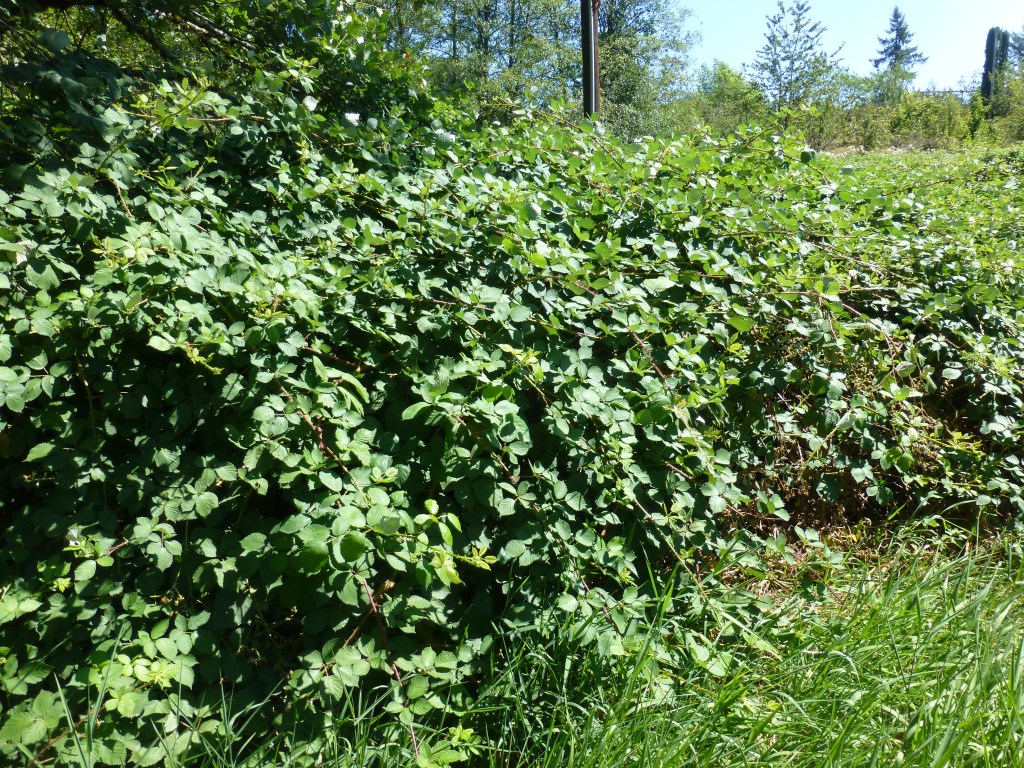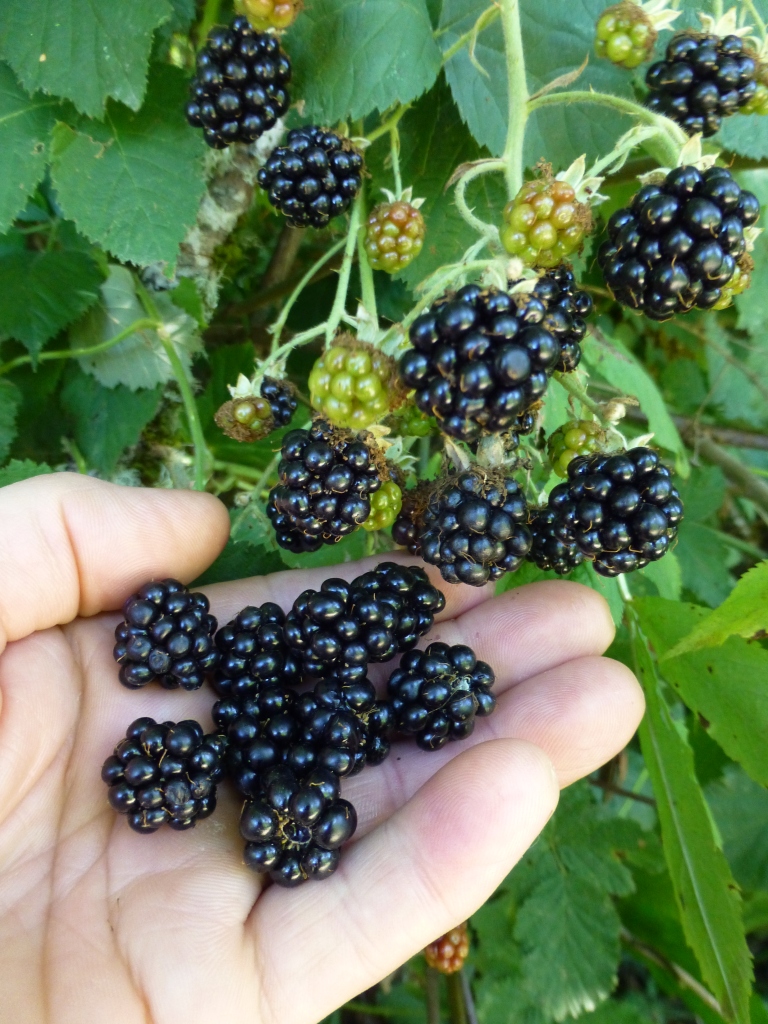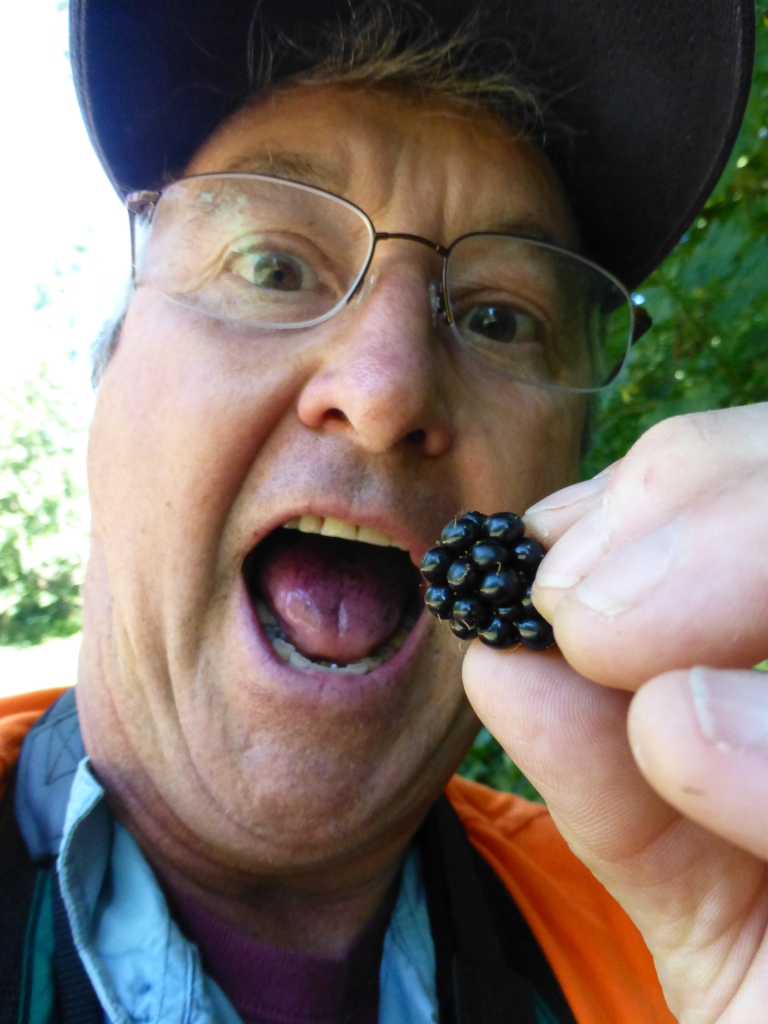By Ken Bevis, Stewardship Wildlife Biologist, Washington State Department of Natural Resources, ken.bevis@dnr.wa.gov
Iconoclast: pronoun. One who challenges conventional thinking in a manner causing logical confusion and sometimes a reconsidering of established views. A person who attacks cherished beliefs or institutions. (Wikipedia) I want to be one here.
Rubus armenaicus is native to the region of Armenia and northern Iran (located between the Black and Caspian Seas, near Turkey and Russia). It was introduced to Germany in 1835 as a crop plant. Brought to the United States in 1885 by Luther Burbank himself, one of the greats in horticultural history. Somewhere during this phase of crop promotion, the (incorrect) moniker of “Himalayan Blackberry” (HBB) was applied. It was first planted in the U.S. near Santa Rosa California and then to other locations in the Northwest. Apparently never hybridized, it was promoted as vigorous, with heavy berry yields. (True!) The plant escaped propagation and quickly spread. It is now naturalized and considered a noxious weed (as we well know) in many areas, including western Washington.
Himalayan Blackberries: One of the most aggressive and challenging introduced plant species that have established themselves widely on small forest ownerships. HBB outcompete desirable native plants, taking up growing space intended for trees, overrun trails and open forest stands, and generally are a nuisance. Dense thickets are impenetrable due to the strong canes and vicious spines. Ouch! And they are challenging to control. HBB, however, are the only noxious weed I can think of that provides tangible human benefit in the form of jam, cobblers and pies (and I hear wine too). The plant even has a fan base. (The “Himalayan” Blackberry, a California Summer Tradition – Bay Nature)
Food. Water. Cover. The wildlife mantra. When these three things exist in a home range for any species, they have a chance to succeed, i.e. survive and reproduce. How many times have we seen a song sparrow, or a junco, or robin sitting atop an HBB thicket? Or a rabbit scooting underneath? How many bears or birds eat the berries? How many of us have enjoyed the sweet fruits? HBBs can provide cover, and food in abundance.
Let’s face it. They are here to stay. Our “natural” environment, especially in the developed “front country” is a crazy mishmash of both native and introduced species. This topsy-turvy world is an ever-moving kaleidoscope of success and failure, right in front of our eyes. Let’s pop some bubbles: there is no “balance of nature.” The natural world is a seething cauldron of organisms pushing, shoving, cooperating, and surviving (or not), all around us, and they don’t care where they came from (ask a starling if he/she remembers England). Some places have a semblance of stability, especially in relatively undisturbed environments (arguably “balance”), but most of the world now, is “disturbed” and dominated by humans and human influences, such as introduced organisms. Hence, the importance of active management to help us achieve objectives.
So, back to HBB.
They were introduced as a high productivity agricultural plant that grew fast and produced lots of tasty berries. Good objectives, but then, oops. They escaped and now are widespread, and a real pest.
Our Service Foresters, and virtually all land managers in lower elevations of Washington, continuously battle numerous invasive and noxious plants. We have a detailed set of programs with Noxious weed lists and categories, with even legal requirements to control certain species (Class 1). Others have become so ubiquitous (Class 3) that they are basically considered part of the landscape now; HBB is one of these.
Don’t get me wrong, I am not advocating for letting HBB take over the landscape. However, this is one of our “bad” plants that may have some redeeming value as habitat. Many birds and mammals eat the abundant berries (and yes, spread the seed far and wide). The thickets offer amazing cover for many creatures, including birds and mammals.
I heard a story from a landowner in Clark County about a huge HBB thicket on her property. There was a tunnel going into the jungle, big enough for her to crawl into it. She did. Some distance under the viney roof, was a chamber, almost big enough for her to sit up in. What? A bear den? On the far side of the cave, she spotted something in the faint light; it was a porcupine! And how many HBB thickets have low trails going into the vines? Places for rabbits, raccoons, skunks or other medium or small mammals to take refuge? Or locations for birds to nest in the vines or on the ground underneath?
I advocate for habitat piles to create cover thickets for wildlife, and have observed that in western Washington, these will often become HBB thickets with a pile in the middle, providing cover in abundance. And once this happens, it is nearly impossible to control these HBB without destroying the habitat feature.
That said, HBB must be controlled in most circumstances, otherwise many sites will only have this remarkably aggressive plant, thus reducing plant diversity, overall habitat quality and diminishing ecological integrity. There is plenty of information out there about management, including this succinct resource from King County: King County Best Management Practices for Himalayan and Evergreen Blackberry (Rubus bifrons and Rubus laciniatus).
Basically, HBB is bad. It takes over. However, all things in small doses, right? If we recognize that a thicket, or hedgerow, of HBB has some value, and we make sure it doesn’t spread, it can function as a valuable habitat feature, and a place for tasty berries to be harvested. Decide where it is ok to have it. Mow the perimeter regularly. Maybe dig up root crowns. Keep it right there with active management. Where you don’t want it, work to eradicate. Use the tools you need to win!
Good news: HBB has some habitat value. The bad news: it grows too darn much. And to those weed warriors out there, keep up the good work!



